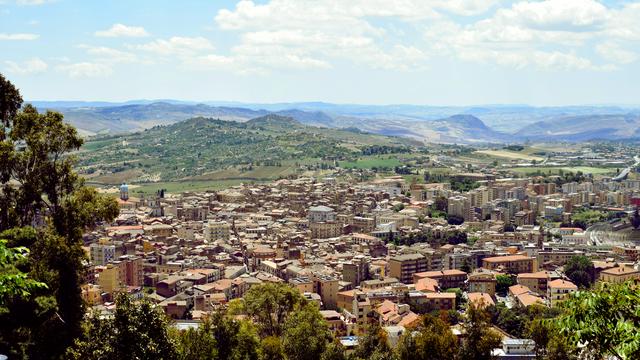
Caltanissetta is a medium-sized city in central Sicily, Italy. It features a rich and long history, the first settlement dating to the 19th century BC.
The city still has traces of the different cultures which followed one another in Sicily: its current structure dates to the 10th century AD and is due to the Arabs, while many additions were made during Norman times and under the Aragonese rule of the Moncada family.
During the 19th century, the city grew in wealth thanks to the extraction of vast nearby sulphur deposits. With 88 mines in its territory, Caltanissetta was nicknamed the world's sulphur capital.
During the third decade of the 20th century, there was a period of intense cultural activity — so much that famed writer Leonardo Sciascia called it a "little Athens".
After the Second World War the city started a slow decline and is now one of the provincial capitals with the highest unemployment rates in the country.
It is particularly famous for its Easter rituals, which take place from Palm Sunday to Easter Monday. Because of the similarity in their Easter traditions, Caltanissetta is twinned with the Spanish city of Seville.
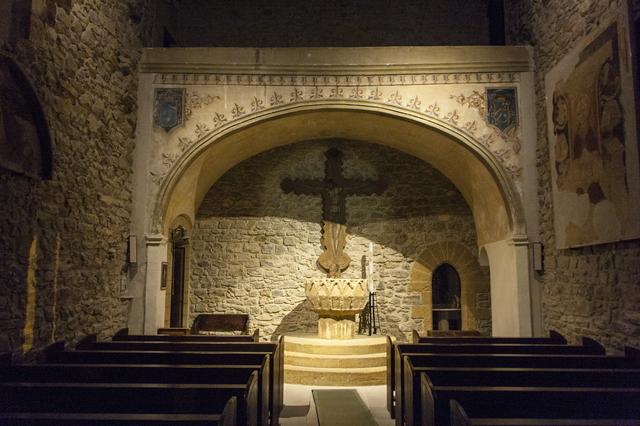
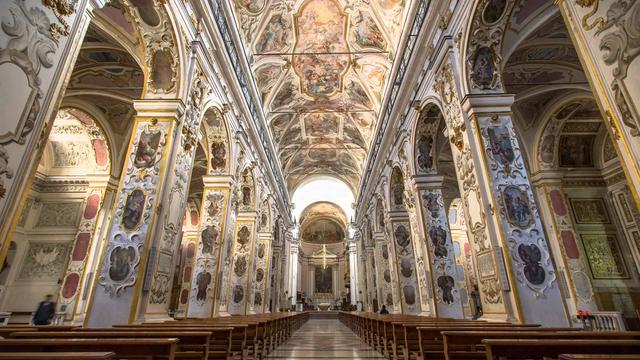
- Cathedral of Santa Maria la Nova, Piazza Garibaldi, 3, +39 0934 21642. Free. See of the bishopry of Caltanissetta, is in the central square Piazza Garibaldi. It was built from 1560 to 1622 and features frescoes by the Flemish painter Guglielmo Borremans and a wooden statue of Saint Michael by Stefano Li Volsi. The interior, in Baroque style, is impressive and its blue dome is easily spotted from many parts of the city, providing an easy to follow landmark.
- Saint Sebastian church, Piazza Garibaldi, 13, +39 0934 581698. Free. Just in front of the Cathedral, with its characteristic red-and-blue facade in an eclectic style.
- Church of Saint Agata, C.so Umberto I, +39 0934 21949. Free. At a short walk from the Cathedral, it is possibly the most impressive Baroque church in the city. Its interior is rich in marble and golden stuccoes. Attached to the church is the ancient Jesuit college. M–F 09:00–13:15 and M Th 15:30–18:15. It is nowadays used by the municipal library (biblioteca Scarabelli) and the conservatory.
- Abbey of the Holy Ghost, Via di Santo Spirito, 57, +39 0934 566596. Free. It is a Norman church built on a pre-existing Arabic farmstead in the outskirts of the city.
- Santa Maria degli Angeli, Via Angeli, 158. A church deconsacrated since the late 19th century and renovated during the 2010s.
- Church of Saint John, Via S. Giovanni Bosco. Free.
- Church of Saint Dominic, P.za San Domenico. Free. A baroque church with a crypt.
- Monumental cemetery, Via Angeli, 23. Daily 07:00–13:00. Free. It serves as the city's cemetery. It is adjacent to the church of Santa Maria degli Angeli and conserves the remains of many illustrious citizens. Some of the tombs and chapels are richly decorated, including with statues of Francesco Biangardi and Michele Tripisciano.
Cathedral of Santa Maria la Nova, Piazza Garibaldi, 3, +39 0934 21642. Free. See of the bishopry of Caltanissetta, is in the central square Piazza Garibaldi. It was built from 1560 to 1622 and features frescoes by the Flemish painter Guglielmo Borremans and a wooden statue of Saint Michael by Stefano Li Volsi. The interior, in Baroque style, is impressive and its blue dome is easily spotted from many parts of the city, providing an easy to follow landmark.
Saint Sebastian church, Piazza Garibaldi, 13, +39 0934 581698. Free. Just in front of the Cathedral, with its characteristic red-and-blue facade in an eclectic style.
Church of Saint Agata, C.so Umberto I, +39 0934 21949. Free. At a short walk from the Cathedral, it is possibly the most impressive Baroque church in the city. Its interior is rich in marble and golden stuccoes. Attached to the church is the ancient Jesuit college. M–F 09:00–13:15 and M Th 15:30–18:15. It is nowadays used by the municipal library (biblioteca Scarabelli) and the conservatory.
Church of Saint Agata, C.so Umberto I, +39 0934 21949. Free. At a short walk from the Cathedral, it is possibly the most impressive Baroque church in the city. Its interior is rich in marble and golden stuccoes. Attached to the church is the ancient Jesuit college. M–F 09:00–13:15 and M Th 15:30–18:15. It is nowadays used by the municipal library (biblioteca Scarabelli) and the conservatory.
Abbey of the Holy Ghost, Via di Santo Spirito, 57, +39 0934 566596. Free. It is a Norman church built on a pre-existing Arabic farmstead in the outskirts of the city.
Santa Maria degli Angeli, Via Angeli, 158. A church deconsacrated since the late 19th century and renovated during the 2010s.
Church of Saint John, Via S. Giovanni Bosco. Free.
Church of Saint Dominic, P.za San Domenico. Free. A baroque church with a crypt.
Monumental cemetery, Via Angeli, 23. Daily 07:00–13:00. Free. It serves as the city's cemetery. It is adjacent to the church of Santa Maria degli Angeli and conserves the remains of many illustrious citizens. Some of the tombs and chapels are richly decorated, including with statues of Francesco Biangardi and Michele Tripisciano.
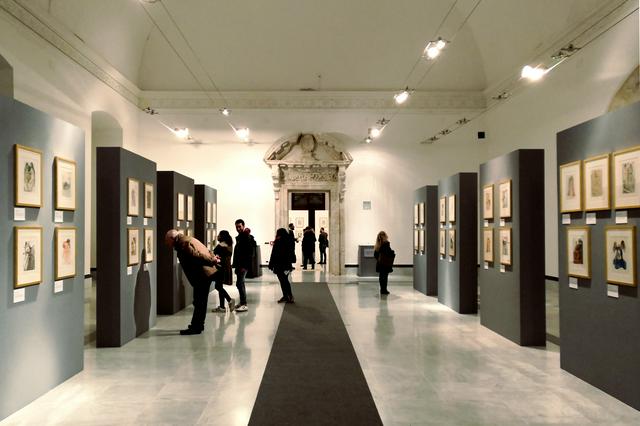
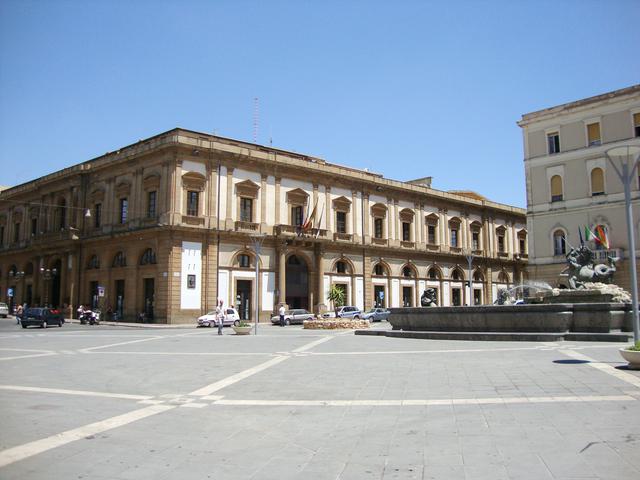
Most of the palaces of note are located in the city centre, nearby Piazza Garibaldi. They include, among others:
- Palazzo del Carmine, C.so Umberto I, 134, +39 0934 21900. Free. The current city hall.
- Palazzo Moncada, Largo Paolo Barile, +39 0934 585890. Tu–F 09:30–13:00 and 17:00–20:00, Sa 10:00–13:00 and 17:00–20:00. Free. An incomplete palace, whose construction was interrupted because its owner Guillermo de Moncada was named Viceroy of Valencia and moved back to the Iberian Peninsula. Nowadays it hosts a movie theatre and the municipal art gallery.
- Ospedale Vittorio Emanuele, V.le Regina Margherita, 36. The former city hospital.
Palazzo del Carmine, C.so Umberto I, 134, +39 0934 21900. Free. The current city hall.
Palazzo Moncada, Largo Paolo Barile, +39 0934 585890. Tu–F 09:30–13:00 and 17:00–20:00, Sa 10:00–13:00 and 17:00–20:00. Free. An incomplete palace, whose construction was interrupted because its owner Guillermo de Moncada was named Viceroy of [[Valencia]] and moved back to the Iberian Peninsula. Nowadays it hosts a movie theatre and the municipal art gallery.
Ospedale Vittorio Emanuele, V.le Regina Margherita, 36. The former city hospital.
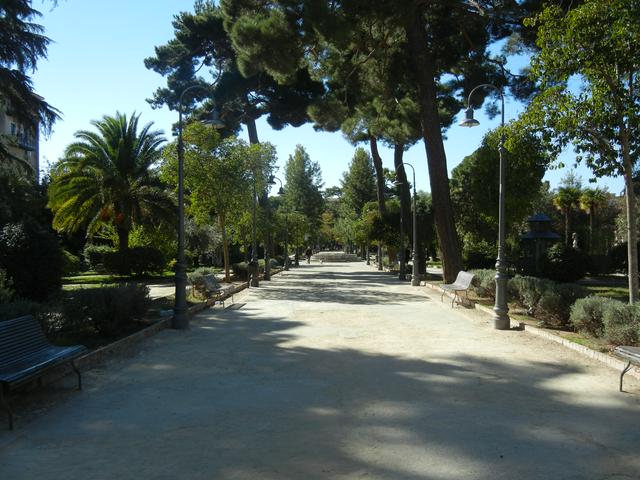
- Castle of Pietrarossa, Via Castello di Pietrarossa. Probably built already during the 10th century, it was largely destroyed by an earthquake in 1567. Its two remaining towers can be seen just behind the monumental cemetery.
- Monument to Christ the Redeemer, Via S. Giuliano. It was built during the 1900 jubilee, on top of San Giuliano mountain. It is a popular evening destination, especially during the hot summer months, due to the temperature usually being around 5 degrees lower than in the rest of the city.
- Triton fountain, Piazza Garibaldi. Located in the central Piazza Garibaldi, it is probably the most iconic monument of the city and is often used as its informal symbol. It was recently renovated and a new lighting system creates suggestive effects during the evenings.
- The radio transmitter, Via Antenna. Surprisingly, one of the most known features of the city is its radio transmitter, due to it being the tallest structure in Italy.
- The most interesting public parks are located in the city centre and are the elegant Villa Amedeo and Villa Cordova.
- Villa Amedeo, V.le Regina Margherita, 32. Daily 09:00–21:00.
- Villa Cordova, V.le Conte Testasecca, 11. Daily 09:00–21:00.
Castle of Pietrarossa, Via Castello di Pietrarossa. Probably built already during the 10th century, it was largely destroyed by an earthquake in 1567. Its two remaining towers can be seen just behind the monumental cemetery.
Monument to Christ the Redeemer, Via S. Giuliano. It was built during the 1900 jubilee, on top of San Giuliano mountain. It is a popular evening destination, especially during the hot summer months, due to the temperature usually being around 5 degrees lower than in the rest of the city.
Triton fountain, Piazza Garibaldi. Located in the central Piazza Garibaldi, it is probably the most iconic monument of the city and is often used as its informal symbol. It was recently renovated and a new lighting system creates suggestive effects during the evenings.
The radio transmitter, Via Antenna. Surprisingly, one of the most known features of the city is its radio transmitter, due to it being the tallest structure in Italy.
The most interesting public parks are located in the city centre and are the elegant Villa Amedeo and Villa Cordova.
- Villa Amedeo, V.le Regina Margherita, 32. Daily 09:00–21:00.
- Villa Cordova, V.le Conte Testasecca, 11. Daily 09:00–21:00.
The most interesting public parks are located in the city centre and are the elegant Villa Amedeo and Villa Cordova.
- Villa Amedeo, V.le Regina Margherita, 32. Daily 09:00–21:00.
- Villa Cordova, V.le Conte Testasecca, 11. Daily 09:00–21:00.
- Archaeological museum, Via di Santo Spirito, +39 0934 567062. Daily 09:00–13:00 and 15:30–19:00, closed the last Monday of each month. €4 full, €2 reduced. Opened in 2006, is in the outskirts of the city, just behind the Abbey of the Holy Ghost. It features numerous artefacts from prehistoric and historic times, from all-over the province. The museum host some copies of the artefacts exposed, which are free for the public to touch, so that blind or sight-impaired people can experience them.
- Mineralogic, paleontologic, and sulphur mines Museum, V.le della Regione, 71, +39 0934 591280. M–Sa 09:00–13:00. Free. It contains a rich collection of fossils and more than 5000 minerals. Opened in 2012, it hosts a permanent exhibition on the technological, scientific and social aspects of the sulphur mines of central Sicily.
- Municipal Art Gallery and Tripisciano Museum, C.so Umberto I, 134, +39 0934 21900. Free. Contains works from local artists, including the famed sculptor Michele Tripisciano, and temporary exhibitions with loans from all-over the world.
- Contemporary Art Museum, Via Giacomo Matteotti, 2. Hosted in an old underground anti-aerial bunker in the very centre of the city, it was opened in 2017. It doesn't have a permanent collection, but it hosts temporary exhibition of contemporary national and international artists.
- Diocesan Museum, V.le Regina Margherita, 29, +39 0934 21165. M–F 09:00–13:00 and 16:00–19:00. Free. Its permanent exhibition of sacred art and miniated books testifies to the artistic ferment characterising the city during the 18th and 19th centuries.
Archaeological museum, Via di Santo Spirito, +39 0934 567062. Daily 09:00–13:00 and 15:30–19:00, closed the last Monday of each month. €4 full, €2 reduced. Opened in 2006, is in the outskirts of the city, just behind the Abbey of the Holy Ghost. It features numerous artefacts from prehistoric and historic times, from all-over the province. The museum host some copies of the artefacts exposed, which are free for the public to touch, so that blind or sight-impaired people can experience them.
Mineralogic, paleontologic, and sulphur mines Museum, V.le della Regione, 71, +39 0934 591280. M–Sa 09:00–13:00. Free. It contains a rich collection of fossils and more than 5000 minerals. Opened in 2012, it hosts a permanent exhibition on the technological, scientific and social aspects of the sulphur mines of central Sicily.
Municipal Art Gallery and Tripisciano Museum, C.so Umberto I, 134, +39 0934 21900. Free. Contains works from local artists, including the famed sculptor Michele Tripisciano, and temporary exhibitions with loans from all-over the world.
Contemporary Art Museum, Via Giacomo Matteotti, 2. Hosted in an old underground anti-aerial bunker in the very centre of the city, it was opened in 2017. It doesn't have a permanent collection, but it hosts temporary exhibition of contemporary national and international artists.
Diocesan Museum, V.le Regina Margherita, 29, +39 0934 21165. M–F 09:00–13:00 and 16:00–19:00. Free. Its permanent exhibition of sacred art and miniated books testifies to the artistic ferment characterising the city during the 18th and 19th centuries.
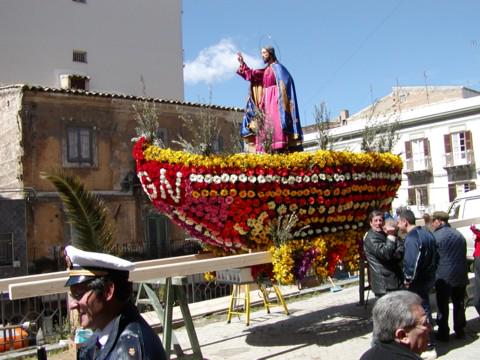
The central moment in the life of the city is the Easter week. This is a period spanning from Palm Sunday to Easter Monday.
During this period the city fills with tourists and emigrants who come back to participate in the celebrations. It can be hard to find accommodation, unless it is reserved far in advance.
- Regina Margherita Theatre, C.so Vittorio Emanuele II, 1, +39 0934 547034. M–F 10:00–13:00 and 17:00–20:00 (box office). Built in 1873, during the second half of the 20th century the theatre was closed for a long time. It was renovated and finally reopened in 1997 and it has since been the main theatre of the city. Tickets can be purchased via LiveTicket.
- Rosso di San Secondo Theatre, Via Matteotti, 10.
- Supercinema (movie theatre), Via Dante Alighieri, 10, +39 0934 26055.
- Moncada Palace Multiplex (movie theatre), Via Matteotti, 10.
Regina Margherita Theatre, C.so Vittorio Emanuele II, 1, +39 0934 547034. M–F 10:00–13:00 and 17:00–20:00 (box office). Built in 1873, during the second half of the 20th century the theatre was closed for a long time. It was renovated and finally reopened in 1997 and it has since been the main theatre of the city. Tickets can be purchased via LiveTicket.
Rosso di San Secondo Theatre, Via Matteotti, 10.
Supercinema (movie theatre), Via Dante Alighieri, 10, +39 0934 26055.
Moncada Palace Multiplex (movie theatre), Via Matteotti, 10.
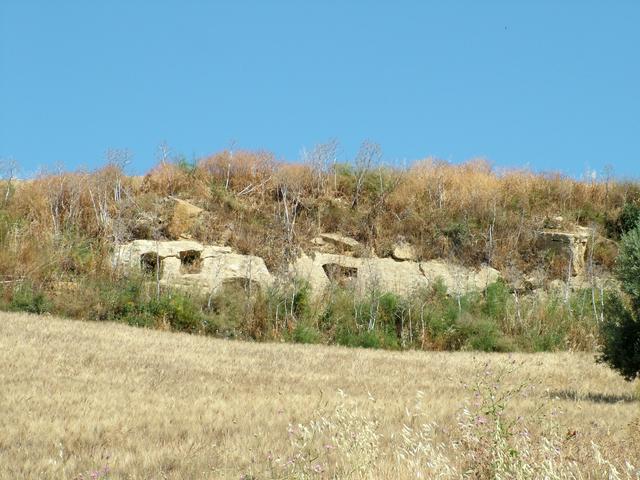
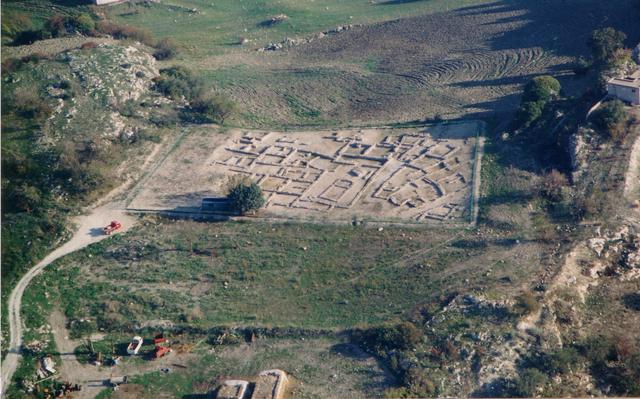
- Sabucina Excavations, C.da Sabucina, +39 0934 554968. Free. An archeological park with excavations, roughly 8 km east of the city. The excavations unearthed remains from the bronze age, the greek period, and the roman one. Of particular value is its necropolis.
- Gibil Gabib archaeological site, C.da Gibil Gabib, +39 0934 554968. Free. The site is marked by the passage of different civilizations: the Castelluccio culture, the Siceliotes during the bronze age, and the the Greeks.
- Vassallaggi archaeological site, C.da Roccella. Originally a bronze age village, it flourished during the 7th century BC as a fortress. Presumably built by the Sican culture, it was then inhabited by the Sicels, the Greeks and the Romans. The presence of early Christian tombs testifies its importance at least up to the 1st century AD.
Sabucina Excavations, C.da Sabucina, +39 0934 554968. Free. An archeological park with excavations, roughly 8 km east of the city. The excavations unearthed remains from the bronze age, the greek period, and the roman one. Of particular value is its necropolis.
Gibil Gabib archaeological site, C.da Gibil Gabib, +39 0934 554968. Free. The site is marked by the passage of different civilizations: the Castelluccio culture, the Siceliotes during the bronze age, and the the Greeks.
Vassallaggi archaeological site, C.da Roccella. Originally a bronze age village, it flourished during the 7th century BC as a fortress. Presumably built by the Sican culture, it was then inhabited by the Sicels, the Greeks and the Romans. The presence of early Christian tombs testifies its importance at least up to the 1st century AD.
Central Sicily and the Province of Caltanissetta in particular are scattered with many former sulphur mines (Zolfare). Some of these have been turned into industrial archaeological sites and are open to visits. In the following, we list the closest to the city proper. The Mines Touristic District website contains extensive information on most of the mines in the provinces of Caltanissetta, Agrigento and Enna.
- Gessolungo Mine. One of the oldest, deepest, and most profitable mines. Mining activity in the area was recorded already at the beginning of the 18th century. It was the theatre of many accidents in which hundreds of miners lost their lives. The most notable is probably the 1881 accident in which 65 miners died, including 19 children. Because of their agility and small size, children (known in Sicilian as Carusi) were used extensively in the mines. Those who died at work were buried in a nearby cemetery, the Cimitero dei Carusi, which is nowadays open for visits.
- Trabonella Mine. It is one of the earliest mines to open and, again, one of the deadliest ones. It is particularly famous for the many strikes organised during the 20th century by the local Miner's League and the Caltanissetta section of the Communist and Socialist party, to claim humane working conditions for the miners and the suppression of minor labour.
- Gabbara Mine.
- Apaforte Stincone Mine.
Gessolungo Mine. One of the oldest, deepest, and most profitable mines. Mining activity in the area was recorded already at the beginning of the 18th century. It was the theatre of many accidents in which hundreds of miners lost their lives. The most notable is probably the 1881 accident in which 65 miners died, including 19 children. Because of their agility and small size, children (known in Sicilian as Carusi) were used extensively in the mines. Those who died at work were buried in a nearby cemetery, the Cimitero dei Carusi, which is nowadays open for visits.
Trabonella Mine. It is one of the earliest mines to open and, again, one of the deadliest ones. It is particularly famous for the many strikes organised during the 20th century by the local Miner's League and the Caltanissetta section of the Communist and Socialist party, to claim humane working conditions for the miners and the suppression of minor labour.
Gabbara Mine.
Apaforte Stincone Mine.
- Natural Reserve Monte Capodarso e Valle dell'Imera Meridionale, +39 0934 541722. Daily 09:00–13:00 and 16:00–19:00. Free. A natural reserve managed by the association Italia Nostra. It is a birdwatcher's paradise, with more than 150 species passing through the reserve during the year, 60 of which nest there. In the reserve it is possible to spot birds of prey (kestrels, kites, Bonelli’s eagles) and birds that rest there during their long migrations (herons, cranes, marsh harriers). Guided tours are free of charge, but must be reserved in advance via email or phone call.
- Maccalube di Terrapelata, Via dei Vulcanelli, Villaggio Santa Barbara. These mud volcanoes are located in the outskirts of the city and offer the view of a landscape almost from another planet. They are still active and are often off-limits to the general public, due to safety concerns. Their last large eruption in 2008 damaged various buildings in the nearby Santa Barbara village.
- Natural Reserve Lago Sfondato, +39 0934 564038. A natural reserve managed by the association Legambiente. It is noteworthy for its geological formations, its flora, its typically Mediterranean fauna, the prehistoric necropolis, and the picturesque landscapes. Visits can be reserved via email or phone.
Natural Reserve Monte Capodarso e Valle dell'Imera Meridionale, +39 0934 541722. Daily 09:00–13:00 and 16:00–19:00. Free. A natural reserve managed by the association Italia Nostra. It is a birdwatcher's paradise, with more than 150 species passing through the reserve during the year, 60 of which nest there. In the reserve it is possible to spot birds of prey (kestrels, kites, Bonelli’s eagles) and birds that rest there during their long migrations (herons, cranes, marsh harriers). Guided tours are free of charge, but must be reserved in advance via email or phone call.
Maccalube di Terrapelata, Via dei Vulcanelli, Villaggio Santa Barbara. These mud volcanoes are located in the outskirts of the city and offer the view of a landscape almost from another planet. They are still active and are often off-limits to the general public, due to safety concerns. Their last large eruption in 2008 damaged various buildings in the nearby Santa Barbara village.
Natural Reserve Lago Sfondato, +39 0934 564038. A natural reserve managed by the association Legambiente. It is noteworthy for its geological formations, its flora, its typically Mediterranean fauna, the prehistoric necropolis, and the picturesque landscapes. Visits can be reserved via email or phone.
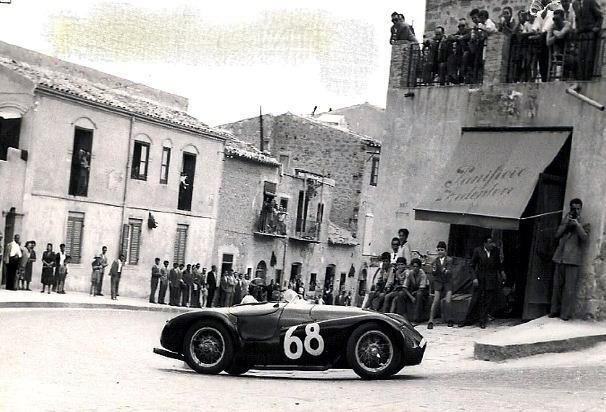
Caltanissetta hosts many sport events of regional, national, and international renowns.
It can be difficult to find accommodation during the periods when the events take place.
- Coppa Nissena. Free. It is a racing hillclimbing competition, whose first edition took place in 1922. Because it is part of several national championships towards which it accrues points, it sees a massive participation of drivers from all over the country.
- Rally Città di Caltanissetta. Free. This rally, which starts in Caltanissetta and goes through San Cataldo, Marianopoli, Villalba and Serradifalco, is part of the national championship Coppa Italia Rally and of the regional one.
- Torneo Città di Caltanissetta, V.le Amedeo. A tennis tournament, part of the ATP Challenger Tour international competition, played on outdoor red clay courts.
Coppa Nissena. Free. It is a racing hillclimbing competition, whose first edition took place in 1922. Because it is part of several national championships towards which it accrues points, it sees a massive participation of drivers from all over the country.
Rally Città di Caltanissetta. Free. This rally, which starts in Caltanissetta and goes through San Cataldo, Marianopoli, Villalba and Serradifalco, is part of the national championship Coppa Italia Rally and of the regional one.
Torneo Città di Caltanissetta, V.le Amedeo. A tennis tournament, part of the ATP Challenger Tour international competition, played on outdoor red clay courts.
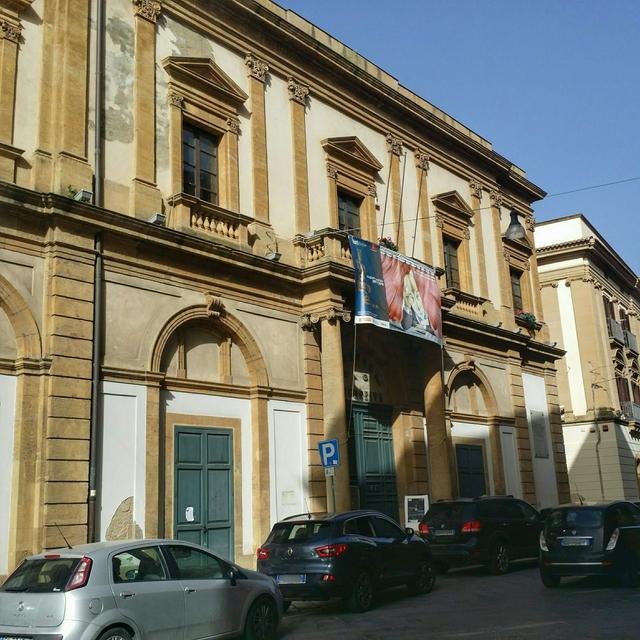
- Musicalmuseo. Free. A yearly musical competition and series of concerts for students of the secondary education cycle, coming from allover Italy and from some European countries. The event usually takes place in May and the students perform in various museums and landmarks of the city, while the final gala evening is held in the Regina Margherita theatre. Due to the high number of participants (they were 2500 in the 2017 edition) it might be very hard to find accommodation in the city and in nearby towns during the event dates.
- Festival Città di Caltanissetta. The main event for contemporary pop music in the city, the competition started in 1989 and has been held yearly ever since. It usually takes place in the early summer and, since 2019, the final evening takes place in the Rosso di San Secondo theatre.
- Kalat Nissa Film Festival. An international short film festival. The movies are presented in locations throughout the city, but the final gala event is held in the Regina Margherita theatre.
- Sicily Mineral Show. The only exchange of minerals organised in Italy south of Rome, it was started in 1978.
Musicalmuseo. Free. A yearly musical competition and series of concerts for students of the secondary education cycle, coming from allover Italy and from some European countries. The event usually takes place in May and the students perform in various museums and landmarks of the city, while the final gala evening is held in the Regina Margherita theatre. Due to the high number of participants (they were 2500 in the 2017 edition) it might be very hard to find accommodation in the city and in nearby towns during the event dates.
Festival Città di Caltanissetta. The main event for contemporary pop music in the city, the competition started in 1989 and has been held yearly ever since. It usually takes place in the early summer and, since 2019, the final evening takes place in the Rosso di San Secondo theatre.
Kalat Nissa Film Festival. An international short film festival. The movies are presented in locations throughout the city, but the final gala event is held in the Regina Margherita theatre.
Sicily Mineral Show. The only exchange of minerals organised in Italy south of Rome, it was started in 1978.
-YBLqr.medium.jpg)
- Strata 'a Foglia street market, Via Consultore Benintendi. A typical street market with many shops selling fruit, vegetable, and other food products. Its name means "Leaf Street", as the market started in the 1500s with poorer peasants selling wild herbs they collected in the surrounding lands. During the nights it transforms into a food district, with many restaurants, pubs, and street food stands.
- Torronificio Geraci, Via Canonico Pulci, 10, +39 0934 581570. Historical nougat artisan laboratory and shop founded in 1870.
- Lupica Wine Shop, Via Napoleone Colajanni, 58, +39 0934 575873. Wine shop with a wide selection of local wines and liquors. It also sells beers from local micro-breweries.
- Vancheri Roastery, Via Libertà, 148, +39 0934 581098. The main roastery of the city, selling speciality coffees roasted locally.
Strata 'a Foglia street market, Via Consultore Benintendi. A typical street market with many shops selling fruit, vegetable, and other food products. Its name means "Leaf Street", as the market started in the 1500s with poorer peasants selling wild herbs they collected in the surrounding lands. During the nights it transforms into a food district, with many restaurants, pubs, and street food stands.
Torronificio Geraci, Via Canonico Pulci, 10, +39 0934 581570. Historical nougat artisan laboratory and shop founded in 1870.
Lupica Wine Shop, Via Napoleone Colajanni, 58, +39 0934 575873. Wine shop with a wide selection of local wines and liquors. It also sells beers from local micro-breweries.
Vancheri Roastery, Via Libertà, 148, +39 0934 581098. The main roastery of the city, selling speciality coffees roasted locally.
- Delizie d'autore, V.le Trieste, 242, +39 0934 552014. We–M, 08:00-21:00. When the historical Caffè Romano in the city centre closed down in 2014 after 91 years of activity, the former employees decided to start a new enterprise with shared ownership. The result is this pastry shop, which ideally continues in the tradition of the Caffé.
Street food can be purchased basically all-around the city. The following is a list of the most popular venues selling this type of food.
- Forno Garzia, V.le della Regione, 8, +39 0934 591979. M–Sa 06:15–22:45; Su 09:00–18:00. A bakery selling bread, Sicilian style pizza, arancine, calzoni, and different other types of street food.
- Frittoria, V.le Regina Margherita, 11. A place for everything fried. The specialities are panini stuffed with panelle, fried aubergines, or crocché.
- Strata 'a Foglia, Via Consultore Benintendi. Part of the historical street market underwent a radical transformation during summer 2018 and now hosts many small street food shops, ranging from panini to arancine, panelle, polpette (meat balls), etc.
Forno Garzia, V.le della Regione, 8, +39 0934 591979. M–Sa 06:15–22:45; Su 09:00–18:00. A bakery selling bread, Sicilian style pizza, arancine, calzoni, and different other types of street food.
Frittoria, V.le Regina Margherita, 11. A place for everything fried. The specialities are panini stuffed with panelle, fried aubergines, or crocché.
Strata 'a Foglia, Via Consultore Benintendi. Part of the historical street market underwent a radical transformation during summer 2018 and now hosts many small street food shops, ranging from panini to arancine, panelle, polpette (meat balls), etc.
- Lumie di Sicilia, Via Lazio, 3, +39 389 9365841. Tu–Su 13:00–15:30; Tu–Sa 19:30–23:30. Gourmet food from the local tradition for a reasonable price.
- Novecento, Via Medaglie d'Oro, 1, +39 0934 22734. Tu–Su 13:00–15:00 and 20:00–23:00. Fresh raw materials from the market and speciality products from the Caltanissetta province prepared following the tradition.
- La luna nel pozzo, Via Monte S. Giuliano, +39 0934 565710. Tu–Su 19:30–00:00. Peculiar oval pizzas in a rustic environment on top of a hill overlooking the city.
Lumie di Sicilia, Via Lazio, 3, +39 389 9365841. Tu–Su 13:00–15:30; Tu–Sa 19:30–23:30. Gourmet food from the local tradition for a reasonable price.
Novecento, Via Medaglie d'Oro, 1, +39 0934 22734. Tu–Su 13:00–15:00 and 20:00–23:00. Fresh raw materials from the market and speciality products from the Caltanissetta province prepared following the tradition.
La luna nel pozzo, Via Monte S. Giuliano, +39 0934 565710. Tu–Su 19:30–00:00. Peculiar oval pizzas in a rustic environment on top of a hill overlooking the city.
Delizie d'autore, V.le Trieste, 242, +39 0934 552014. We–M, 08:00-21:00. When the historical Caffè Romano in the city centre closed down in 2014 after 91 years of activity, the former employees decided to start a new enterprise with shared ownership. The result is this pastry shop, which ideally continues in the tradition of the Caffé.
- Il covo del Pirata, V.le Sicilia, 55, +39 0934 1993338. Daily 19:00–00:00. Pub with a good selection of drinks and draughts, and simple food. From time to time there is live music.
- All Grain Taproom, Via Terranova, 11, +39 371 1550066. M–Sa 18:00–00:00. Taproom with a selection of bottled and draught beer, including many Sicilian ones. They also have speciality soft drinks from the region.
Il covo del Pirata, V.le Sicilia, 55, +39 0934 1993338. Daily 19:00–00:00. Pub with a good selection of drinks and draughts, and simple food. From time to time there is live music.
All Grain Taproom, Via Terranova, 11, +39 371 1550066. M–Sa 18:00–00:00. Taproom with a selection of bottled and draught beer, including many Sicilian ones. They also have speciality soft drinks from the region.
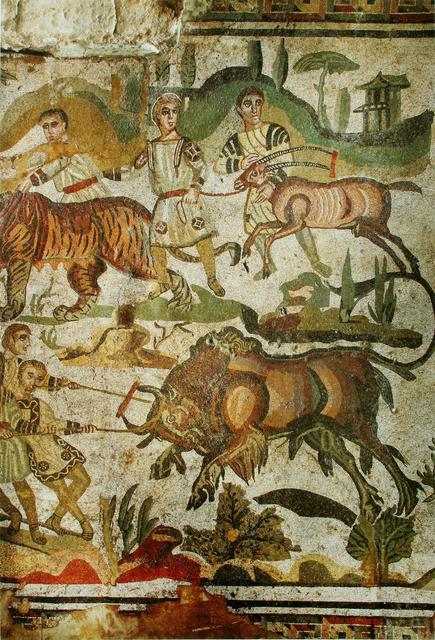
- Agrigento and its Temples Valley. They are a 40-minute car drive from the city. The Greek temples are a Unesco World Heritage Site.
- Another Unesco World Heritage Site is the Villa del Casale. It is a mosaic-laden Roman villa in Piazza Armerina. It takes roughly 50 minutes to drive to the villa.
- Palermo is just a hour drive and is well connected to Caltanissetta via both trains and buses.
- Catania is also a hour's drive and the connections via train and bus are equally frequent.
- Just one hour driving from Caltanissetta is the town of Caltagirone, famous worldwide for the quality of its ceramics and for the Infiorata event, during which many of its long steps are covered with flowers. Together with other late-baroque cities in the Noto Valley, Caltagirone is a Unesco World Heritage Site.
In the province of Caltanissetta many smaller towns are worth a visit:
- Mussomeli and its well-preserved Manfredonic castle.
- The city of Gela, despite having undergone a chaotic and rapid demographic expansion starting from the 1960s and due to the discovery of massive oil fields in its sea, used to be one of the main excavation sites in the island, revealing Phoenician and Greek settlements. It is still possible to visit its archaeological park and the archaeological museum.
- A few km from Gela is the small medieval town of Butera. On its territory is located the Falconara castle, an impressive structure a few metres from the sea.
[[Agrigento]] and its Temples Valley. They are a 40-minute car drive from the city. The Greek temples are a Unesco World Heritage Site.
[[Mussomeli]] and its well-preserved Manfredonic castle.
